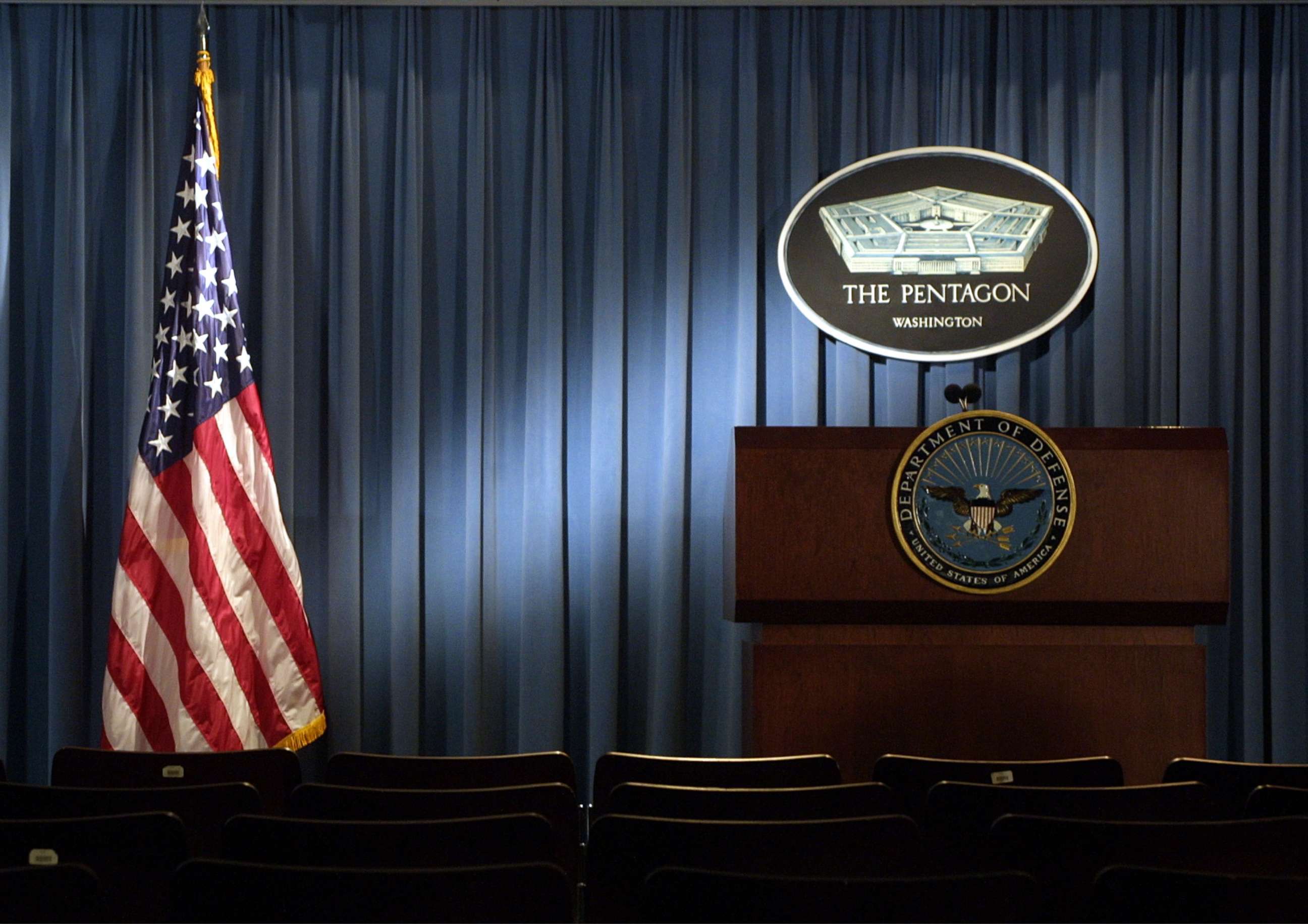Pentagon marks 1 year without on-camera briefing from top spokesperson
The acting Defense Secretary has promised a return to regular briefings.
The Pentagon marks an unusual anniversary on Friday: 365 days without an on-camera briefing from a top spokesperson.
For decades, the department regularly held these on-camera engagements in the Pentagon Briefing Room, which provided the press corps with an opportunity to ask the chief spokesperson about any topic concerning the U.S. military and national security. But in the last year, the briefings disappeared, even if the stories emanating from the building did not.
Since the last briefing a year ago, the U.S. began withdrawing troops from Syria amid an ongoing threat from the Islamic State, deployed thousands of troops to the U.S.-Mexico border and unveiled a a new policy for transgender service members.
North Korea resumed weapons testing.
President Donald Trump declined to rule out military action in Venezuela.
The Pentagon created a new military branch: Space Force.
American service members were killed in combat in Somalia, Syria and Afghanistan, where the war is now in its 18th year. One DOD secretary resigned over policy differences with the president, and his then-deputy assumed the "acting" position for the longest period in history. Though, earlier this month, White House press secretary Sarah Sanders said Trump intends to nominate him to the position permanently.
Most recently, the U.S. deployed additional troops and military assets to the Middle East after intelligence indicated there were increased threats against U.S. forces in the region from Iran and its proxies.
Some defense officials have argued that the lack of briefings tells a lopsided story about transparency and press access. Pentagon spokesperson Tom Crosson pointed to the opportunities that media have to travel domestically and overseas with the Pentagon's top leadership, along with the topic-specific briefings or "gaggles" held by defense officials, including one last week about Iran.
But those engagements are often off camera and limited to select media outlets. And in some circumstances, the department stipulates that the briefing's content must be attributed to anonymous officials.
"The Department of Defense is committed to transparency to the media and the public," Crosson told ABC News. "The Pentagon remains one of the only government agencies that allows nearly unrestricted access to the building for hundreds of credentialed journalists. Journalists also have 24-7 access to a team of press officers to assist with their defense-related questions."

"Of course it's true that there are lots of other settings that the department is making people available," said David Ensor, a former journalist who's now the director of the Project for Media and National Security at George Washington University. "But there's something about that briefing room with the cameras up that has advantages to it. It sets an example of integrity and accountability that I think has been the envy of the world for many years."
The image of the Pentagon spokesperson behind the podium "gives you a feeling of confidence that in this democracy the officials in charge of our defense are confident enough to speak in public about it, to answer questions come one come all," Ensor told ABC News. "It's helpful to the image of American national security that it has been in this way publicly presented."
It's not only the Pentagon's podium that has gone dark. White House spokesperson Sarah Sanders hasn't briefed since March 11, and the State Department only just resumed its regular briefings on Wednesday after a seven-week absence.
Acting Defense Secretary Patrick Shanahan has promised a return to regular briefings.
In April, he named Jonathan Hoffman as the new assistant to the secretary of defense for public affairs, a post that had been filled in an "acting" capacity since the beginning of the year. But it's unclear if Hoffman will actually brief or if Shanahan will appoint someone specifically for that task.
Dana White, Hoffman's predecessor under former Defense Secretary James Mattis, briefed almost weekly beside a three-star general. But around the same time that she held her last briefing, she came under investigation by the Pentagon's Inspector General for the possible misuse of authority for personal purposes. That investigation is ongoing.
Several months after that, in November, Mattis selected a Marine Corps general to take over responsibilities at the podium, but the general stepped aside after Mattis resigned, never actually briefing the press.
So, on Friday, the Pentagon Briefing Room will remain dark, and it will remain that way for at least another week.
Late Thursday afternoon, it was announced that the briefing room would be closed for one week due to "carpet installation and other maintenance."
ABC News' Luis Martinez contributed to this report.




